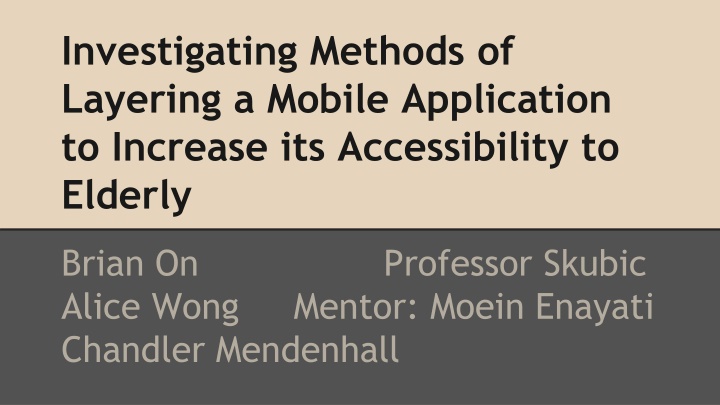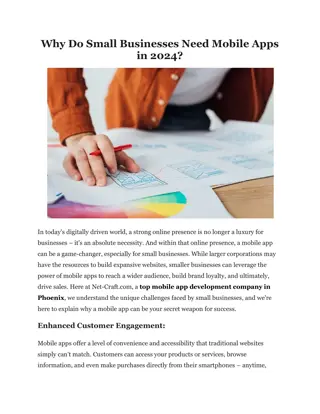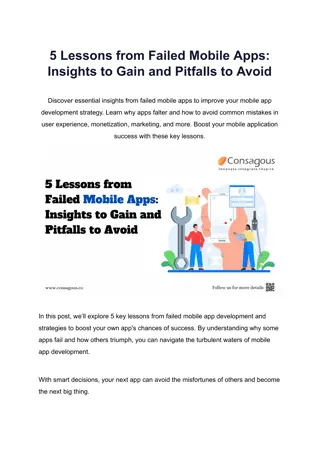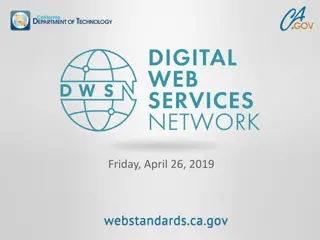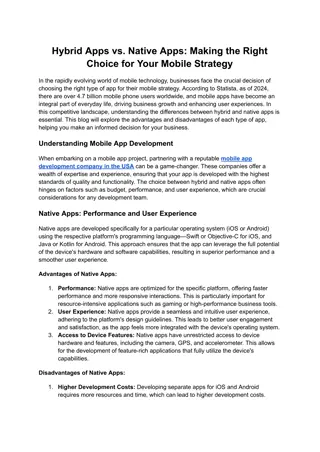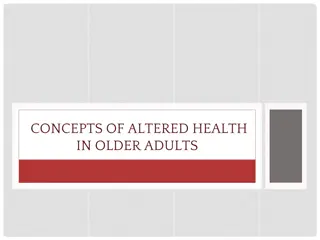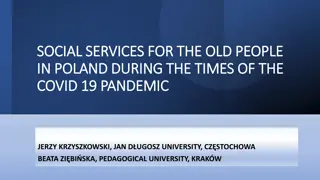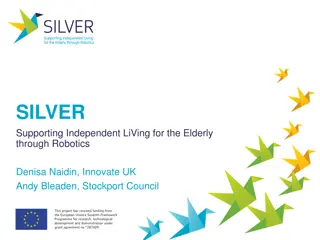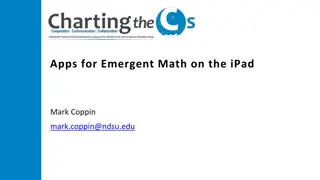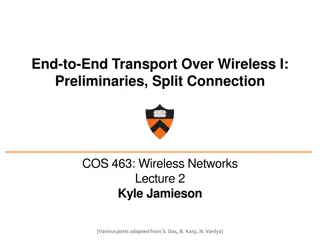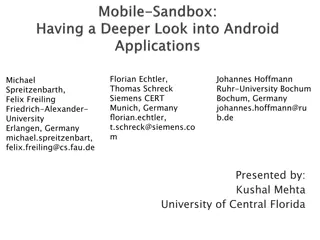Layering Mobile Apps for Elderly Accessibility
Investigating methods of layering a mobile application to enhance usability for older adults struggling with technology adoption. Research explores multi-layered interfaces, dividing functionalities into simplified and complex layers for incremental learning. The study created hybrid mobile apps with different layered versions based on functionality and complexity.
Download Presentation

Please find below an Image/Link to download the presentation.
The content on the website is provided AS IS for your information and personal use only. It may not be sold, licensed, or shared on other websites without obtaining consent from the author.If you encounter any issues during the download, it is possible that the publisher has removed the file from their server.
You are allowed to download the files provided on this website for personal or commercial use, subject to the condition that they are used lawfully. All files are the property of their respective owners.
The content on the website is provided AS IS for your information and personal use only. It may not be sold, licensed, or shared on other websites without obtaining consent from the author.
E N D
Presentation Transcript
Investigating Methods of Layering a Mobile Application to Increase its Accessibility to Elderly Brian On Professor Skubic Alice Wong Mentor: Moein Enayati Chandler Mendenhall
Problem Older adults have difficulty learning to use mobile technologies
Solution: Multi-Layered Interfaces Multi-Layering o Divide features of full application into >=2 layers Learn on simplified base layer Move onto increasingly complex/functional layers o Step-wise, incremental learning
Multi-Layered Interfaces cont. But... more than one way to layer an application
Research Question Is there a way to sort the features of a fully functional mobile application into layers that optimizes learnability for elderly?
Research Question cont. We investigate two methods of layering o Functionality Features similar in function go in the same layer o Complexity Features similar in difficulty go in the same layer
Implementation We created a hybrid mobile application for our study o Delivers health data in the form of charts to users
Implementation cont. From the complete application, we created two different multi-layered versions of the application o Version A is layered by functionality Layer 1: access to all pages, but no graphs Layer 2: Graph display + customizability available o Version B is layered by complexity Layer 1: access to four graph pages -- no Four Graph Search or graph customizability Layer 2: Four Graph Search + customizability available
Study Conducted at TigerPlace with 10 residents o 4 residents used Version A o 6 residents used Version B Two measures: o Objective measure: each task timed o Subjective measure: each participant rated how hard they found the task on a scale of 1 to 5
Study cont. Residents performed 3 sets of 2 tasks (can be composed of several subtasks) o First set on the first layer o Second set on the second layer o Third set after ~5 minute break on second layer First and second sets composed Initial Task Set o The order of the tasks differed depending on version participants used o Overall tasks were the same Third set composed Retention Task Set o Performed on 2nd layer (full application) o Same tasks + order for both groups
Objective Results Tasks 1 - 6: Initial Task Set Tasks 7 - 11: Retention Task Set Order of Initial Task Set tasks depended on version (tasks are displayed in order presented to Version A participants)
Legend: Tasks 1 - 6: Initial Task Set Tasks 7 - 11: Retention Task Set
Legend: 1, 2, 3 - basic graph display 4 - graph customizability 5 - data statistics 6, 7 - graph interpretation
Subjective Results After each task, asked participant to rate how difficult they found the task they performed Most rated using the application and performing the tasks as easy (1)
Future Work The data suggests functionality is a better way of layering However, the data is not statistically significant Further testing with more people would need to be done for more conclusive results
References Kurniawan, Sri, Murni Mahmud, and Yanuar Nugroho. "A study of the use of mobile phones by older persons." CHI'06 extended abstracts on Human factors in computing systems. ACM, 2006. Kang, Hyunmo, Catherine Plaisant, and Ben Shneiderman. "New approaches to help users get started with visual interfaces: multi-layered interfaces and integrated initial guidance." Proceedings of the 2003 annual national conference on Digital government research. Digital Government Society of North America, 2003. Leung, Rock, et al. "Multi-layered interfaces to improve older adults initial learnability of mobile applications." ACM Transactions on Accessible Computing (TACCESS) 3.1 (2010): 1.
